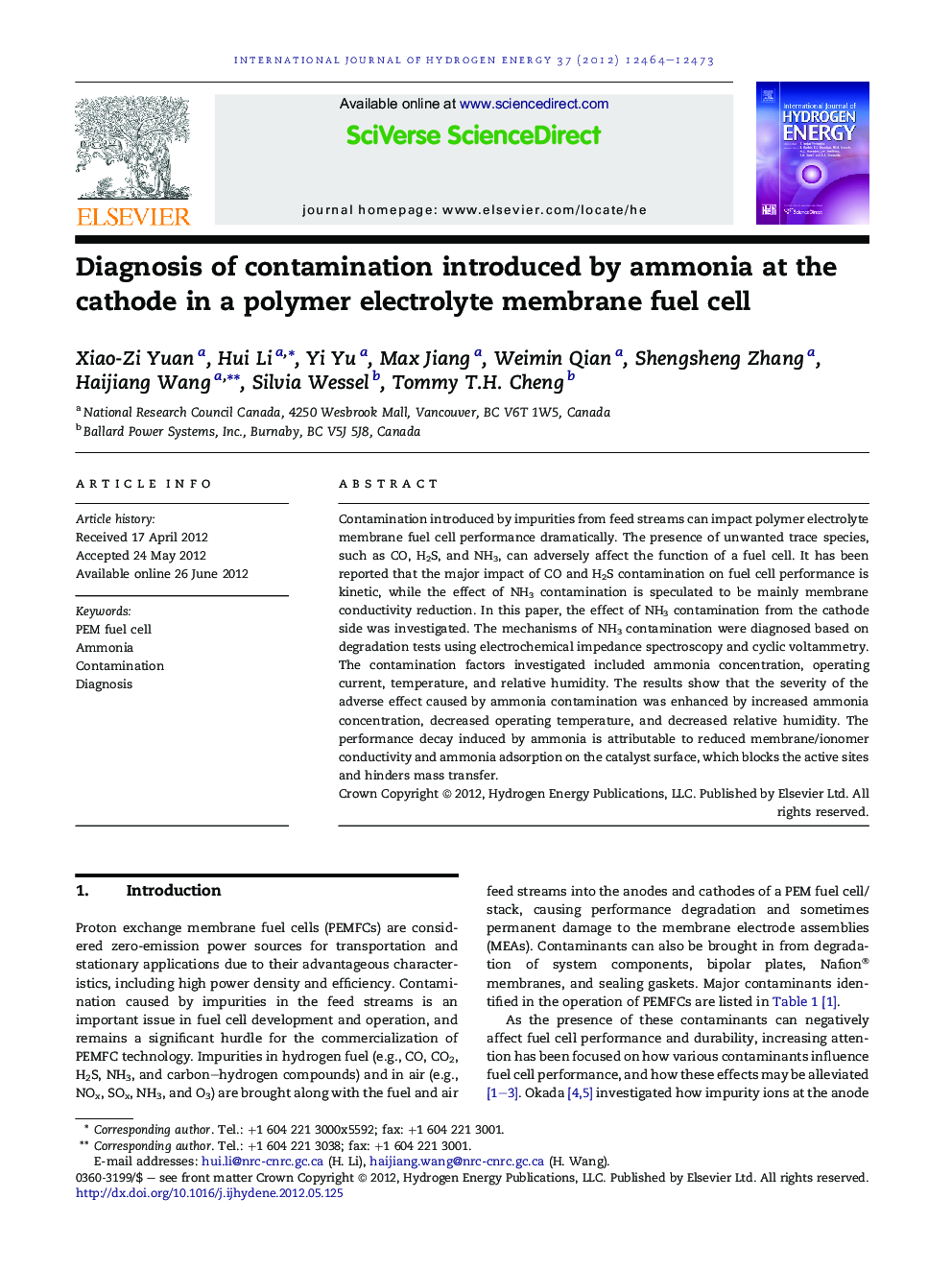| Article ID | Journal | Published Year | Pages | File Type |
|---|---|---|---|---|
| 1271083 | International Journal of Hydrogen Energy | 2012 | 10 Pages |
Contamination introduced by impurities from feed streams can impact polymer electrolyte membrane fuel cell performance dramatically. The presence of unwanted trace species, such as CO, H2S, and NH3, can adversely affect the function of a fuel cell. It has been reported that the major impact of CO and H2S contamination on fuel cell performance is kinetic, while the effect of NH3 contamination is speculated to be mainly membrane conductivity reduction. In this paper, the effect of NH3 contamination from the cathode side was investigated. The mechanisms of NH3 contamination were diagnosed based on degradation tests using electrochemical impedance spectroscopy and cyclic voltammetry. The contamination factors investigated included ammonia concentration, operating current, temperature, and relative humidity. The results show that the severity of the adverse effect caused by ammonia contamination was enhanced by increased ammonia concentration, decreased operating temperature, and decreased relative humidity. The performance decay induced by ammonia is attributable to reduced membrane/ionomer conductivity and ammonia adsorption on the catalyst surface, which blocks the active sites and hinders mass transfer.
► Effects of NH3 contamination from the cathode side were investigated. ► Mechanisms of NH3 contamination were diagnosed based on degradation tests. ► Adverse effect was enhanced by increased current, and decreased temperature and RH. ► Performance decay was due to reduced ionomer conductivity and NH3 adsorption.
